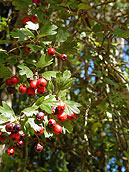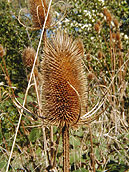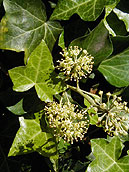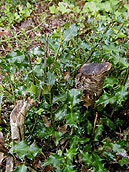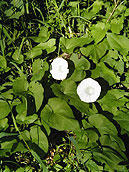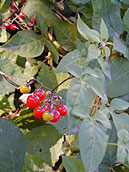Natural History of the Canyon
Invasive Weeds
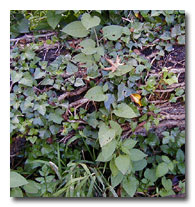 One of the biggest problems in the restoration of the Reed Canyon is the removal of invasive, non-native vegetation. Many of the plants that have come to dominate the area are foreign species that have escaped from cultivation or have entered the country accidentally. These weeds provide little or no habitat for animal life and they crowd out the native plants.
One of the biggest problems in the restoration of the Reed Canyon is the removal of invasive, non-native vegetation. Many of the plants that have come to dominate the area are foreign species that have escaped from cultivation or have entered the country accidentally. These weeds provide little or no habitat for animal life and they crowd out the native plants.
Here is our "Rogues Gallery" of the worst invasive species in the Reed Canyon. We are currently trying to remove or control all of the plants listed below. (For more information on how the college is dealing with these and other invasive weeds, see the Non-Native Species Management section of the Canyon Enhancement Plan.)
Click on any photo for a close-up.
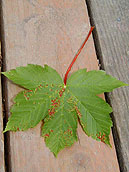 Sycamore Maple
Sycamore Maple
Acer pseudoplatanus
Sycamore maples are often used for landscaping but they can be very invasive in wetland areas. The oldest ones on campus were planted beside what is now the ETC. From there they have spread widely into the canyon below the Chemistry building.
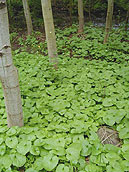 Garlic Mustard
Garlic Mustard
Alliaria petiolata
This European biennial is common in the lower canyon between the fish ladder and the theatre. It forms large, even-aged populations that can smother out the native plants. The leaves smell like garlic when you crush them.
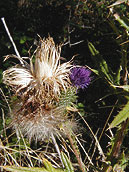 Thistle
Thistle
Cirsium sp., Carduus sp.
Thistle is a bristly weed with sharp thorns and a bright purple flower that looks like a tuft of hair. The seeds are spread by the wind and quickly invade disturbed areas.
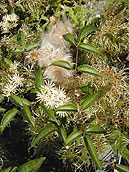 Clematis (Travelers-joy)
Clematis (Travelers-joy)
Clematis vitalba
Another non-native invasive weed in the U.S., clematis is presently found only in Oregon and Washington. It climbs trees and can completely blanket them, block out all sunlight, and kill them.
Hawthorn trees were planted as part of the early landscaping at Reed, but they have become invasive in the canyon. They produce large numbers of seeds and are difficult to remove once they become established.
Teasel has a cone-like head with purple flowers. Blooms appear first in a band around the middle of the cone and then spread out to the opposite ends. The seed head turns brown and persists through the winter.
Originally planted for landscaping and erosion control, english ivy has invaded most natural areas around Portland. It grows rapidly and smothers native vegetation.
Holly trees were planted years ago in many places on campus and birds have spread the seeds down into the canyon. They are hard to eradicate because they rapidly sprout from the roots after being cut down.
A climbing vine with large white flowers that resemble the horn on a victrola. The vines can be 15 feet long, and they wind around other plants, choking or smothering them.
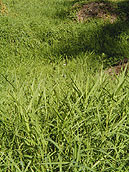 Reed Canarygrass
Reed Canarygrass
Phalaris arundinacea
This grass can be very invasive and it forms thick mats, up to 7 feet high, that can choke out all other vegetation. It's common in disturbed waterways in the Portland area.
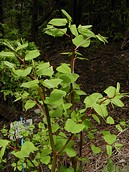 Japanese Knotweed
Japanese Knotweed
Polygonum cuspidatum
Japanese knotweed is a rhizomatous perennial that resembles bamboo and forms bunches up to six feet high. It's spread primarily by pieces of rhizome being carried in fill dirt or in streams.
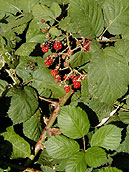 Himalayan Blackberry
Himalayan Blackberry
Rubus discolor
Nightshade has star-shaped purple flowers with yellow centers. The berries, which are bright red and contain many seeds, are generally toxic to humans, but are sometimes eaten by birds.
